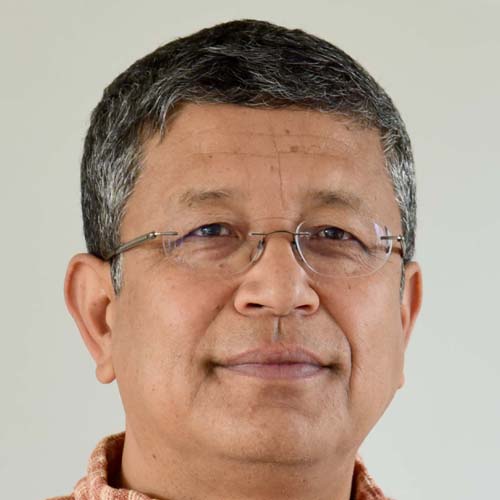Columns
Mergers and factions
Given past experience, we might as well write off the yet-to-be-born party even before it comes into being.
Deepak Thapa
So, we are back to square one. In the sense that there is talk again about that eternal dream of the great factionalists of the world. I am referring, of course, to the communists, and their hopeful vision of seeing all the leftists united under a single hammer-and-sickle banner.
We have had 60 years of glorious history of splits and mergers since the first schism in the Communist Party of Nepal in 1962. The more recent past saw the division of the CPN-UML and later its resurrected whole although there were those who refused to be subsumed back into the original party. During its first stint in the government after the first Constituent Assembly, the CPN (Maoist), with its own decades-long history of factional splits and unifications, managed to entice in another faction and renamed itself the UCPN (Maoist). Notwithstanding the aspirational “U” (for “unified”) in its new name, not long after it succeeded in manoeuvring itself out of power the party saw numerous groups splitting off. So much so that by the time it saw another unification moment and became the CPN (Maoist Centre), the number of its offshoots it managed to bring back was 10. That obviously did not include the numerous others which have so far kept clear of the main Maoist party.
On-again, off-again
It was as the CPN (Maoist Centre) that the party formed alliance with the UML in the 2017 general elections and roundly hammered the Nepali Congress at the hustings. Buoyed by their success, the country’s two main communist forces decided to unite and became the incongruously named Nepal Communist Party (NCP) while equally incongruously foreswearing the term “unified” to denote a development that for once did seem so at the time.
The otherwise-historical Nepal Communist Party (NCP) government will probably be remembered most for the hash KP Sharma Oli made both of governance and the dream of a common communist front. Having overseen the unification of two parties, Oli’s finagling ensured that the end came sooner than later and with the strongest communist force ever seen in Nepal splitting into three parts.
Now, two of the three, the CPN (Maoist Centre) and the CPN (Unified Socialist) believe they have a chance where numerous attempts have failed thus far. The two parties have declared their intent to go for a merger after the upcoming November elections. The first question that springs to mind is why not now when they could make political capital by touting their common credentials. Perhaps they reckon they can wrangle more seats from the current ruling coalition when negotiating as two parties.
What beats reason by far is why Pushpa Kamal Dahal Prachanda and Madhav Kumar Nepal believe they will succeed despite their own history staring at them. For starters, despite their common lineage that draws upon the original CPN, the two parties come from two distinct strands of the communist movement. That difference was most strongly manifest during the drafting of the constitution with the Maoist Centre pushing for more liberal provisions with regard to an inclusive polity and society as opposed to the Unified Socialist’s mother party, the UML, displaying ample signs of kneejerk-reactionaryism, including from Nepal himself.
But the greater difficulty, if the merger actually goes ahead, is accommodating leaders from the two parties in a single structure at all levels, from the centre to the ward. The Nepal Communist Party (NCP) tackled the matter in a manner characteristic of our parties—by generally not dealing with it. It did, of course, create various bodies, but the imperative to include aspirants from both parties ensured that these became unwieldy bodies rather than those purported to provide guidance to the party leadership. The proposed new party will obviously face a similar problem.
Prachanda has so far held his party under a tight grip and while there are factions, these are at the second level and none with the clout to challenge his leadership. Nepal, however, comes to the table as the head of the larger of the two factions within his party. In the wings is Jhala Nath Khanal, who will certainly not take things lying down, as he made clear with his virulent opposition to the Millennium Challenge Corporation deal. It is this seasoned leadership consisting of former prime ministers that Prachanda will have to contend with.
As long as it lasts
To drive home this last point, it is worth considering an excerpt from an old piece of writing by American political scientist Austin Ranney. “Just about every democratic political party contains a number of factions, each advancing the cause of a particular set of leaders or a particular line of policy or both against the competing leaders and policies of other factions,” he wrote. “Hence every party to some degree faces the problem of keeping its major factions sufficiently happy that they will remain loyal to the party in its competition with opposing parties.”
Ranney continues: “One of the tactics most often used to accomplish this vital task is to see to it that the party’s roster of candidates is well and truly ‘balanced’—that is, contains sufficient representatives of each major faction to assure all factions’ leaders and members that their ideas and interests will be fairly treated and that they indeed will continue to have a voice in the party’s affairs.”
A simple and straightforward analysis that will forever remain true. I get a feeling that the main reason for putting off a pre-election merger is that Prachanda, Nepal and Khanal all dread the squabbling over the selection of candidates. The portents have never been good on that score.
Even otherwise, given the past experiences over and over, we might as well write off the yet-to-be-born party even before it comes into being. The only purpose it is likely to serve is to thumb their collective nose at Oli. For as long as the party lasts, that is.




 6.12°C Kathmandu
6.12°C Kathmandu















